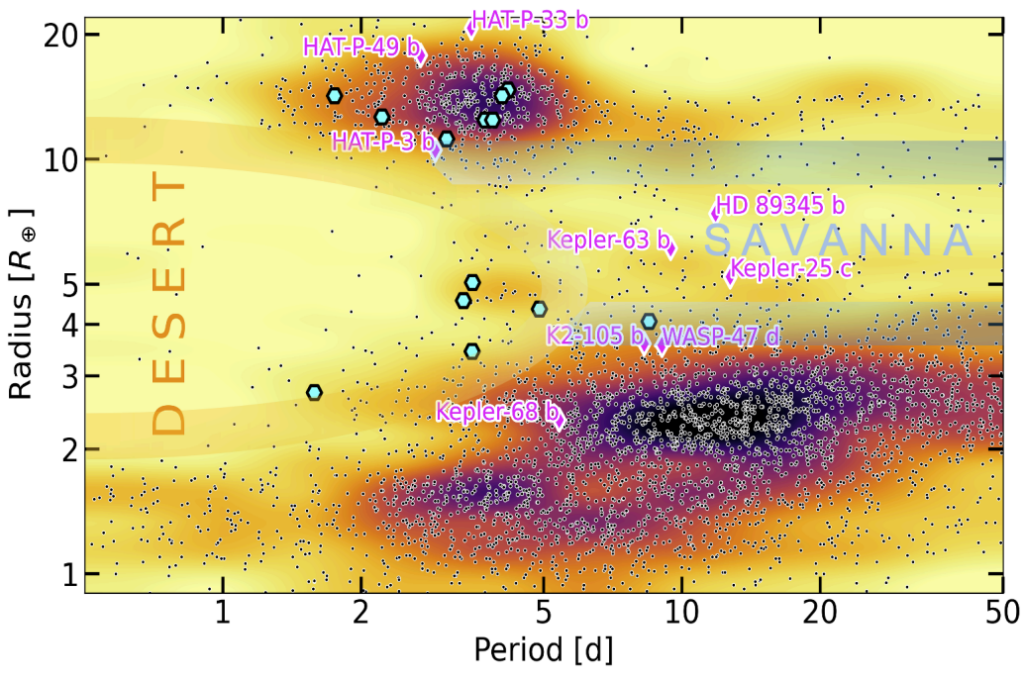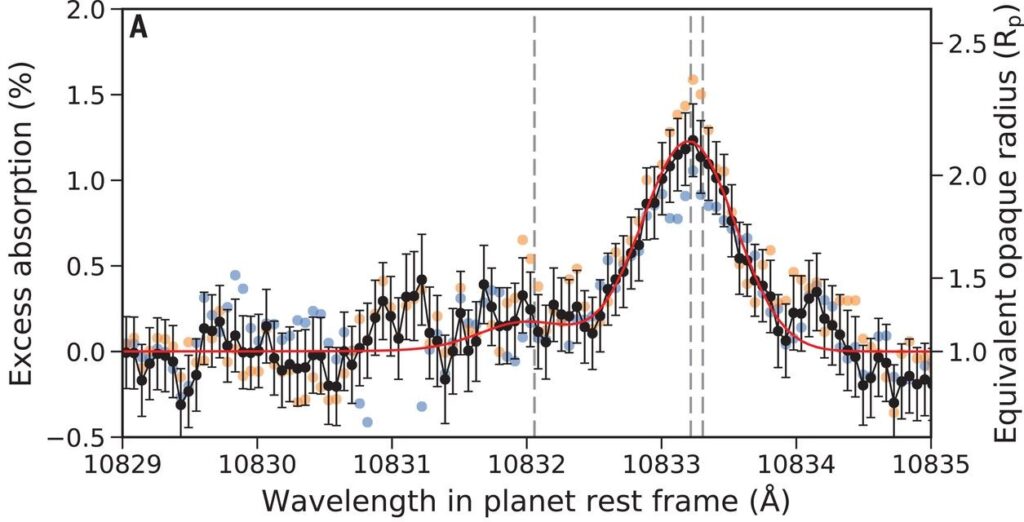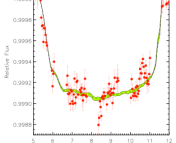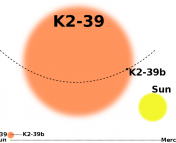Title: DREAM: III. A helium survey in exoplanets on the edge of the hot Neptune desert with GIANO-B@TNG
Authors: G. Guilluy, V. Bourrier, Y. Jaziri, W. Dethier, D. Mounzer, P. Giacobbe, O. Attia, R. Allart, A. S. Bonomo, L. A. Dos Santos, M. Rainer, A. Sozzetti
First Author’s Institution: INAF – Osservatorio Astrofisico di Torino, Via Osservatorio 20, 10025, Pino Torinese, Italy
Status: Accepted to A&A [open access]
A tale as old as time
Now that we know of thousands of exoplanets in our Galaxy — thank you Kepler and TESS and their use of the transit method!!! — we can study more and more about overall trends in the population of planets and their parent stars. What does this say about how planets formed and evolved? It turns out, if you look at the distribution of exoplanet radii versus their orbital periods (Figure 1) you can uncover some striking features. In particular, there is a lack of Neptune-sized planets orbiting faster than 4 days, dubbed the “hot Neptune desert”, and a subsequent low population density “savanna” for longer period planets of the same size. These features are thought to be imprints on the exoplanet population caused by common processes they experienced during formation and throughout their evolution.

Some scientists have proposed that the hot Neptune desert and savanna are a direct result of next-to-no hot Neptunes being formed from common planet formation processes. Other scientists propose that there were originally a higher number of hot Neptunes born from exoplanet formation, but they lost their atmospheres quickly in their early years eventually becoming smaller exoplanets. There are also different theories on what powers said atmospheric escape: is it heated by intense starlight, or by a recently-formed planetary core? A third cause of the desert could be planetary migration, where exoplanets form at longer orbital periods (farther from their parent star) but experience a disruptive event that causes them to migrate inwards.
These conflicting theories are common in science and serve to reinforce that more study is needed to understand the general and underlying processes at work. There is a camp of observers who look for observational evidence of one or some of these processes, and a camp of theorists who model the different behaviors to see how they work case-by-case and on a population-scale. The authors of today’s paper – aka the DREAM team – are in the observers camp.
Faith, trust, and helium (not dust)
One method of probing these unknowns is to search for observational evidence of atmospheric escape as it is happening. This can be done using transmission spectroscopy – looking for the fingerprint on starlight as it travels through the intervening escaping atmosphere (How Do We Learn About a Planet’s Atmosphere?). Teams have searched for the fingerprint of escaping neutral hydrogen using the Hubble Space Telescope (HST), but the DREAM team used the ground-based near-infrared Telescopio Nazionale Galileo (TNG) to look for helium. This is because 1) it’s a lot easier to be granted time to use ground-based telescopes than the wildly popular and extremely busy HST, and 2) there is minimal interstellar gas contamination of the wavelengths of starlight where we look for helium fingerprints.
Figure 2 shows what the authors were looking for. If escaping helium is present and dense enough, it will absorb part of the parent star’s helium emission as it transits in between the parent star and our telescope, resulting in non-zero helium absorption indicated by Figure 2’s y-axis. If the opposite is true and there is little-to-no escaping helium, the authors would see a horizontal flat line around zero absorption.

I can’t show you the worlds
Today’s authors have constructed a sample of nine low-density exoplanets at the edges of the hot Neptune desert and savanna which should currently be experiencing atmospheric escape (indicated in Figure 1). The group of planets was chosen to explore a range of exoplanet sizes and orbital periods; further, none of the planets have been observed for helium previously. The parent stars were all bright enough to be easily observable by TNG. The principal and surprising result from today’s paper is that none of the nine planets show any helium absorption.
Does this mean that our theory for atmospheric escape is wrong and these planets are able to retain their atmospheres despite sitting dangerously close to their parent stars? Not necessarily. It is more likely that the amount of helium escaping from these planets is too low density to show absorption noticeable to the TNG and that the uncertainties associated with the telescope data are too noisy to reveal this low density of escaping helium.
The authors of today’s paper highlight the plethora of near-infrared instruments that can conduct similar helium escape surveys – JWST’s NIRSpec, Canada-France-Hawai’i Telescope’s SPIRou, Calar Alto Telescope’s CARMENES, and TNG’s GIANO-B. It is important to keep exploring atmospheric escape from both an observational and theoretical perspective since it substantially impacts the majority of exoplanets. Because of this, it is likely we will keep seeing more from the DREAM team and other surveyors of this phenomenon!
Astrobite edited by Storm Colloms.
Featured image credit: NASA/GSFC.





>>>thank you Kepler and TESS and their use of the transit method
Don’t forget CoRoT !
Absolutely!!!